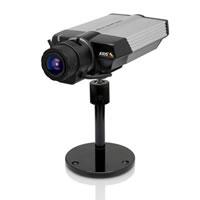Mission
With 2,186 miles of tracks, Belgium has one of Europe's densest and most modern rail networks. In 2006, the SNCB Group transported almost 20 million passengers by rail.
On a day-to-day basis, 20,000 people collaborate in ensuring the safety of passengers, personnel, and equipment. The SNCB Group invests yearly in its security policy, a particularly complex undertaking in view of the group's involvement in the public domain. In response to the increase in station traffic, the SNCB decided to reinforce the presence of cameras within its security policy to enhance the protection of employees and passengers.
Solution
The station at Ottignies became the focus of a pilot project in 2006. Various different cameras were installed there to measure their effect on criminal behaviour in the station. After several months, a 22% drop in vandalism was recorded. This was the green light for the massive "Malaga Project" within the SNCB Group. The Group currently uses 1,107 cameras (analogue and network models combined), including AXIS 221 Day & Night Network Cameras.
Result
Hendrik Vanderkimpen, Director of the Corporate Security Department of the SNCB Group: "I remain convinced that the presence of cameras contributes to an increased sense of security in passengers and personnel. At the psychological level, they're invaluable."
Network cameras - a complementary tool in the security policy
In the past decade or so, the integration of video surveillance cameras into security policies has been a subject of debate for railroad operators. Hendrik Vanderkimpen, Director of the Corporate Security Department of the SNCB Group says, "An enterprise must reflect on the reasons why it wishes to use security cameras. Within the SNCB Group, the cameras were essentially installed to combat violence, anti-social behaviour, vandalism, and theft."
In 2006, the SNCB Group recorded an increase in the number of violent offenses against property (+11%), offenses involving physical violence (+18%) and offenses against the moral values/feelings of others (+113%). Hendrik Vanderkimpen added: "The strong attraction of the railroad continues to grow. The bus, tram, and subway networks are expanding, and international railroad links are being established, which involves an increase in the number of passengers. Our security personnel cannot be present everywhere at the same time. That's why we use cameras with increasing frequency."
 |
| The AXIS 221 Day & Night network camera |
The Malaga Project
The station at Ottignies became the focus of a pilot project in 2006. Various different cameras were installed there to measure their effect on criminal behaviour in the station. After several months, a 22% drop in vandalism was recorded. This was the green light for the massive "Malaga Project" within the SNCB Group.
The Group currently uses 1,107 cameras (analogue and network models combined). The majority of cameras are installed in waiting rooms, station entrances/exits, stairwells, ticket offices, baggage storerooms, bicycle sheds, and parking lots. Blind testing was used to determine the brands selected.
The AXIS 221 Day & Night Network Camera's performance, ease of maintenance, and the quality of its housing and images (even in environments with low lighting conditions), as well as its integrated functions were essential to its selection. All the camera systems also needed to be uniform and compatible, and the images needed to be transmissible by IP to the SOC (Security Operations Centre).
Increased sense of security
The results were evaluated in three areas: business continuity, theft reduction, and the increase in the general sense of security. Hendrik Vanderkimpen again: "It's still too early to confirm from the numbers that the use of cameras has a positive impact specifically in the above-mentioned areas. Nevertheless, I remain convinced that the presence of cameras contributes to an increased sense of security among passengers and personnel. At the psychological level, they're invaluable. On average, 70% of the images viewed by police permit the perpetrators to be identified, and that's a high success rate."
In the short term, almost 400 new cameras are to be installed in stations. By 2012, the SNCB Group will have a network of more than 2,000 cameras, and a higher percentage of stations will be equipped with them. The SNCB Group is currently looking into the possibility of installing cameras on its trains.












